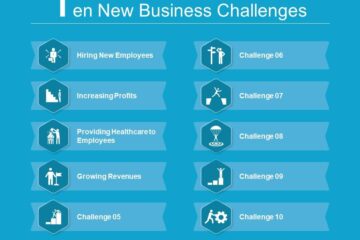
The world is currently in the longest business cycle since the National Bureau of Economic Research has kept records. Investors, executives, and policy makers scratch their heads in wonder as they try to make sense of this new phenomenon. The question many companies want to know is where are we in the business cycle? Are we at the peak with growth about to come tumbling down, or still on the climb where rising growth levels can be expected?
In the U.S. there are clear indicators that we may be at the peak. These include the lowest unemployment in 50 years, rising incomes across all races and job levels, a stock market that continues to reach historic highs (even with the recent volatility sparked by the spread of coronavirus), and a GDP that has been expanding for more than 10 years, beating other expansion cycles. Simultaneously, we see other indicators associated with the trough of the business cycle, including low interest rates and low inflation.
Despite the macroeconomic uncertainty and the unpredictable business cycle, companies need to develop their investment and growth strategies. The question they face is how do you build growth and resilience, irrespective of the stage of the business cycle? Fortunately, our research provides an answer.
Buck the business cycle. Strategize like a market creator.
As we identified in our research, there are two types of strategy. One is market-competing strategy that focuses on beating rivals in existing markets – what we think of as red ocean strategy. The other is market-creating strategy that focuses on generating new markets which we think of as blue ocean strategy.
In our research journey over the last 30 years, we found that while both types of strategy have their role to play, when it comes to growth resilience blue-ocean market-creating moves stand out. They not only unlock a growth edge when economic conditions are favorable, they also generate resilient growth in the face of business cycle downturns and unfavorable economic conditions. How so?
When economic conditions are favorable, all firms tend to benefit by a rising economic tide. But it is market-creating firms — and the leap in consumer surplus they unlock through their innovative value — that gives them a growth edge, as they not only capture a greater share of rising demand, but also pull all-new buyers into the market.
Adverse economic conditions only magnify the growth edge attached to market-creating moves, because, when the economy is in a downturn, there is a natural flight to value for money. Whether they’re short on cash or simply overly cautious, people become far more selective about the products and services they choose to buy and those they stop purchasing. Those forgone products and services tend to offer incremental value, while the chosen ones offer a leap in value, or the largest consumer surplus, that makes people’s lives better. Under these conditions, market-creating moves — which break away from existing offerings and offer buyers a leap in consumer surplus — fast become the products and services of choice, allowing them to better buck contracting markets and rebound faster.
Look no further than the companies that rapidly bucked the 2008 financial crisis – Apple, Amazon, Salesforce, Cirque du Soleil, or even the U.K. charity, Comic Relief’s Red Nose Day. All achieved a rapid bounce back and exceptional growth despite the economic crisis. And each countered a reliance on market-competing moves with a strong bias toward market-creating strategies that offered buyers a leap in value.
Contrast this with Microsoft, a market-competing dominator in its highly profitable Windows and Office products. It wasn’t until Satya Nadella, its new CEO, recently shifted Microsoft’s to a balance of market-competing and market-creating strategies that Microsoft again became a rising star. After 10 years of an essentially flat stock price, Microsoft’s new market-creating focus has catapulted it into the rarified $1 trillion market-cap club. Its new cloud-based product Azure is set to become a new growth engine for the company.
How to build resilient growth
So, what actions should companies take to best manage growth through market cycles? Here are four pieces of advice borne out of our 30-year research journey to the blue ocean.
[“source=hbr”]



